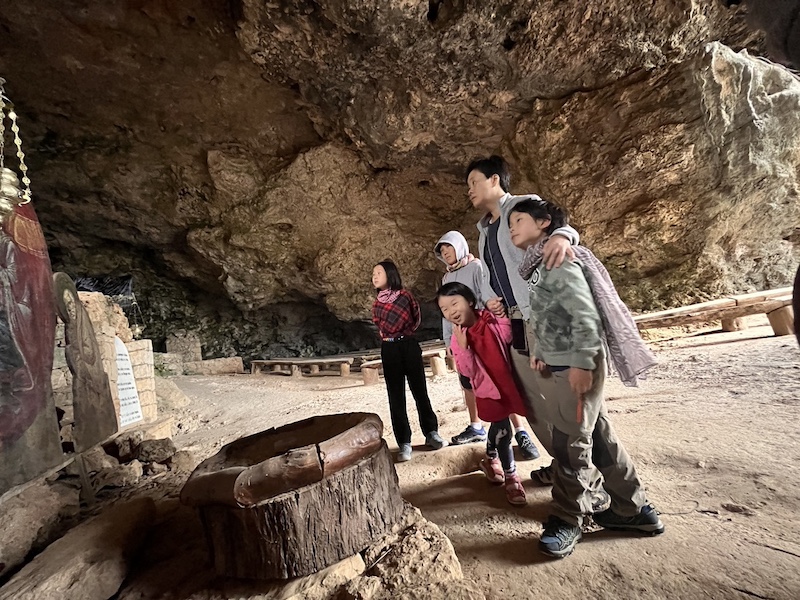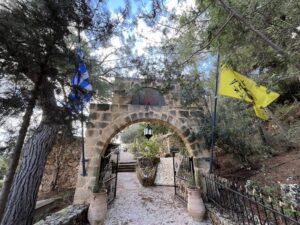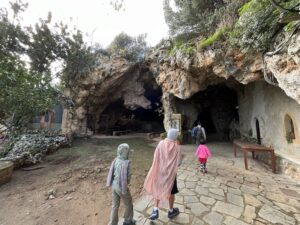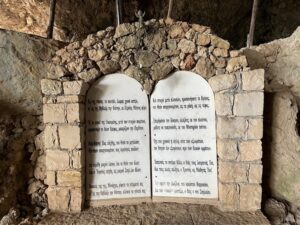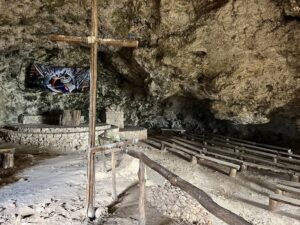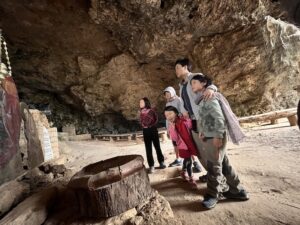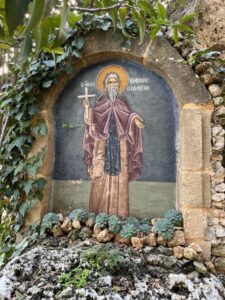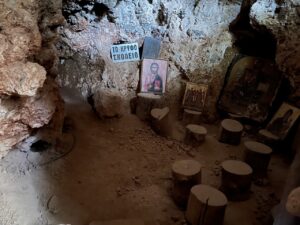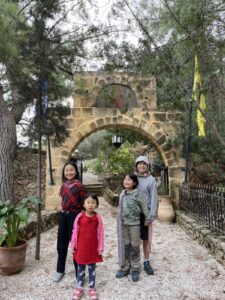St. John the Hermit is well known throughout Greece as a devout Christian ascetic with the ability to perform miracles and who lived in complete solitude in a cave in Crete. I hadn’t heard of St. John before and we are not Christian but I do love learning about religion from the perspectives of anthropology, history, psychology, religious studies and comparative religion.
During our year-long trip, we have conscientiously included countries where we can study influential ancient religions (Ancient Egypt, Ancient Greece, Ancient India) as well as religions in the modern world. We have selected countries where the majority of the population follows each of the major world religions (Christianity, Islam, Hinduism, Buddhism and Judaism) and the three monotheistic religions (Christianity, Islam and Judaism). Unfortunately, due to the war in Gaza, we had to cancel our travels to Israel so we will miss out on studying Judaism this year. Last month while we were in Egypt, we studied Islam. Here in Greece, the majority of the population is Christian, in particular Greek Orthodox, and we were keen to continue our religious studies.
St. John was born in Egypt around 305 AD. Together with a group of pious men, St. John gave up all earthly comforts and pleasures and lived in Cyprus as ascetics to get closer to God. After a few years, their community grew larger and they moved to present-day Turkey to continue their journey closer to God. Their prayers led them to the island of Crete where they settled in remote caves in southwestern Crete and preached the Gospel to the inhabitants of Crete.
It was here that St. John separated from the rest of his ascetic community to dedicate his life entirely to God through prayer and solitude. He searched for a suitable place to continue his spiritual journey and settled in a cave in the rough and wild Avlaki Gorge in Akrotiri. He led a simple and spartan life of fasting and prayer. One day, he crawled out of his cave to pick the wild herbs that were his only sustenance when he was killed by a hunter’s arrow. Because of his spartan lifestyle, St. John was in an emaciated state and couldn’t walk properly so the hunter had mistaken him for a wild animal. St. John managed to drag himself back into his cave to die. The hunter followed the blood trail and found St. John taking his last breaths before returning to God. By the hunter’s account, at this moment, the cave filled with the sounds of angels singing and a mysterious sweet fragrance permeated the air. This cave became famous throughout Crete and over the centuries, has been visited by believers.
The cave where St. John lived his last days in solitude and eventually took his last breath, is the cave that we stood in now. During our approach to the cave, we were never really sure whether we were in the right place. I had expected to find the cave more barren and desolate, but it seems that through the years, believers have added structures and amenities beside the cave and transformed it into a pleasant place for even non-ascetics.
We entered the mouth of the cave and found ourselves in the nave of a church with rows of roughly cut pews arranged before a 3-meter tall cross simply made of a vertical and horizontal log. I don’t know if the pews are there all the time or if they were part of the preparations for the Christmas nativity scene exhibited in the days leading up to Christmas. The nativity scene is well known throughout Greece because it features live animals. Some of the props and decorations for the scene were already in the cave waiting to be assembled. We used google translate to read two stone tablets on display describing the story of Christ.
We explored the small rooms at the back of the cave that were filled with paintings of who we assumed to be John the Hermit painted by different artists in different time periods. There were no signs or information within the cave, but a google search yielded some interesting information.
There was one room with low stools made of cut tree trunks that was used as a “secret school during the Ottoman Era.”
Understandably, our visit to the cave of St. John the Hermit prompted many questions from the children about Christianity, the origin of Christmas and the meaning and purpose of asceticism. We sat down on one of the many picnic tables outside of the cave and watched a few YouTube videos on these topics. The children’s favorite video was one about the story of Christmas. In the video, there was a little boy named Tofu who eagerly and earnestly asked his mother many of the same questions that the children asked me. “Who was Jesus?” “Why do we celebrate Christmas?” These questions led our kids to ask deeper questions. “Why is there religion?” “Why do people believe in God?” “Why are there different religions?” We later nicknamed RY Tofu after the character from the You Tube video because of his similar earnestness in the pursuit of learning.
Author
-

Song is the mother of four children. She and her family have stepped away from it all and in September 2023, began traveling the world while homeschooling. Song is an ABC (American born Chinese) and has an undergraduate degree from Cornell and an MBA from Harvard. She is an entrepreneur and an educator. Her hobbies include learning, traveling, reading, cooking and baking, and being with children.

